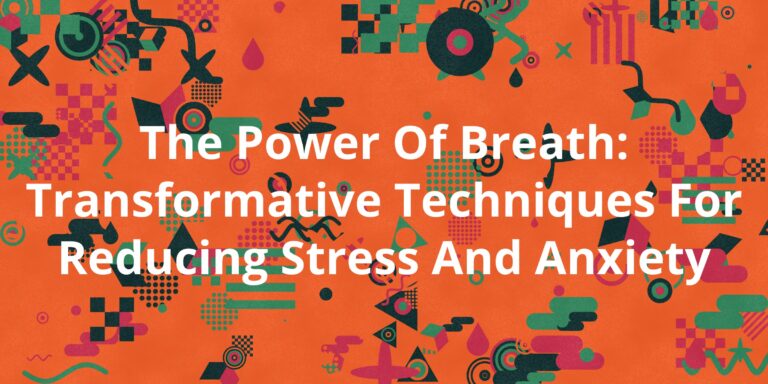Breathing is one of the most fundamental aspects of our existence. We breathe in air to fill our lungs, which provides us with the oxygen we need to survive. However, did you know that our breathing can also have a profound impact on our physical and mental well-being? In this article, we will explore the science behind breathing techniques and how they can unlock the power of your breath.
The Science Behind Breathing Techniques
Breathing is a complex process that involves the inhalation and exhalation of air through the nose or mouth. The air enters our body through the nostrils or mouth, which warms, moistens, and filters the air before it enters the lungs. Once inside the lungs, the air travels down the bronchi and into smaller air sacs called alveoli, where it diffuses into the bloodstream.
The process of breathing is controlled by our respiratory center in the brainstem, which receives information from chemoreceptors in the body that sense the levels of oxygen and carbon dioxide in our blood. When the levels of carbon dioxide become too high, the respiratory center signals the body to breathe in more air, which increases the amount of oxygen in the bloodstream and removes excess carbon dioxide.
Breathing techniques can have a significant impact on this process, as they can alter the way we inhale and exhale air. For example, deep breathing exercises involve taking slow, deep breaths that fill the lungs completely, while shallow breathing involves taking quick, shallow breaths that only partially fill the lungs.
The Benefits of Breathing Techniques
Breathing techniques have been used for thousands of years to promote physical and mental well-being. Here are some of the benefits of different breathing techniques:
1. Deep Breathing: Deep breathing exercises can help to reduce stress, anxiety, and depression. They can also improve cardiovascular function by increasing oxygen intake and reducing blood pressure. Additionally, deep breathing can help to relieve chronic pain, improve digestion, and boost the immune system.
2. Shallow Breathing: Shallow breathing can be used to increase alertness and focus, as it increases the amount of oxygen in the brain. It can also be used to promote relaxation and reduce stress by slowing down the respiratory rate. Additionally, shallow breathing can help to improve digestion and boost the immune system.
3. Alternate Nostril Breathing: Alternate nostril breathing involves alternating between breathing through one nostril at a time. This technique has been shown to reduce stress, anxiety, and depression, as well as improve cardiovascular function and respiratory health. It can also help to promote relaxation and improve sleep quality.
4. Ujjayi Breathing: Ujjayi breathing involves exhaling through a partially closed throat, which creates a hissing sound. This technique has been shown to reduce stress, anxiety, and depression, as well as improve cardiovascular function and respiratory health. It can also help to promote relaxation and improve sleep quality.
How to Practice Breathing Techniques
Practicing breathing techniques is easy and can be done anywhere at any time. Here are some steps to follow:
1. Find a quiet, comfortable place where you can sit or lie down without being disturbed.
2. Close your eyes and take a few deep breaths, inhaling deeply through your nose and exhaling slowly through your mouth.
3. Choose the breathing technique that you want to practice and follow the instructions for that technique.
4. Practice the technique for 5-10 minutes at a time, several times per day if possible.
Conclusion
Breathing is an essential aspect of our existence, and it can have a profound impact on our physical and mental well-being. By practicing different breathing techniques, we can unlock the power of our breath and promote relaxation, reduce stress, improve cardiovascular function, and boost the immune system. So next time you’re feeling stressed or anxious, take a few deep breaths and see how it makes you feel!



